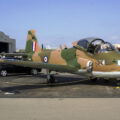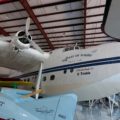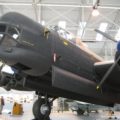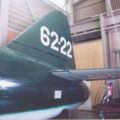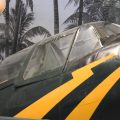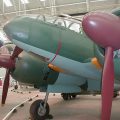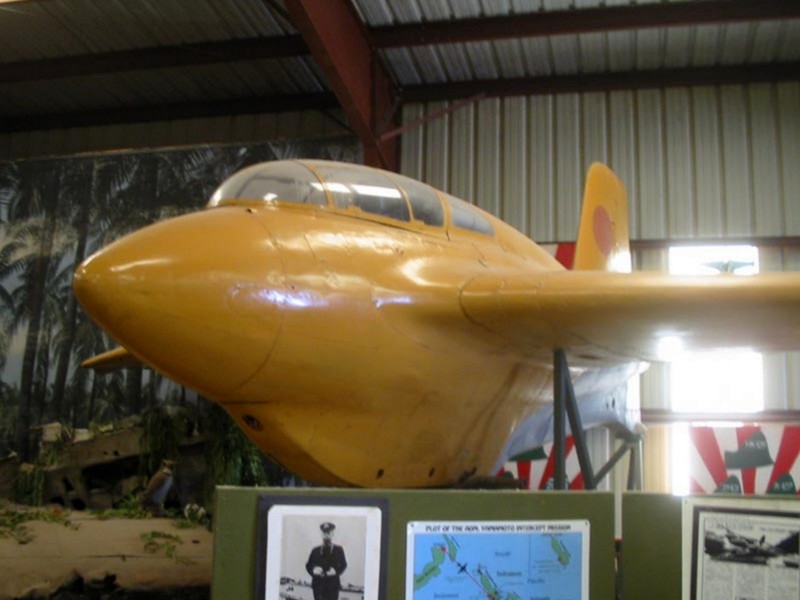
Mitsubishi J8M1 Shusui | |
|---|---|
| Riik | Jaapan |
| Rolli | Rocket-powered interceptor aircraft |
| Esimene lend | 7 July 1945 |
| Ehitatud | 7 |
2007 Mitsubishi J8M Shūsui was a Japanese World War II rocket-powered interceptor aircraft closely based on the German Messerschmitt Me 163 Komet. Built as a joint project for both the Navy and the Army Air Services, it was designated J8M (Navy) and Ki-200 (Army).
Allikas: Mitsubishi J8M1 Shusui on Wikipedia
| Mitsubishi J8M1 Shusui | |
|---|---|
| Fotograaf | Teadmata |
| Lokaliseerimine | Teadmata |
| Fotod | 33 |
Seotud komplektid:
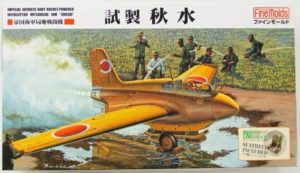
Leia komplektid eBayst:
| Mitsubishi J8M1 Shusui Walk Around | |
|---|---|
| Fotograaf | Cees Hendriks |
| Lokaliseerimine | Teadmata |
| Fotod | 21 |
The Mitsubishi J8M1 Shusui was a rocket-powered interceptor aircraft developed by Japan during World War II. It was based on the German Messerschmitt Me 163 Komet, which Japan had acquired the license to produce in 1944. However, due to difficulties in shipping a complete Komet and its engine to Japan, the Japanese engineers had to reverse-engineer the aircraft from a flight manual and other limited documentation. The J8M1 was a joint project of both the Imperial Japanese Army Air Service (JAAF) and the Imperial Japanese Navy Air Service (JNAF), and it was designated as Ki-200 by the former and J8M by the latter. The name Shusui means “Autumn Water” or “Sharp Sword” in Japanese.
The J8M1 was intended to be a high-speed, high-altitude interceptor that could counter the threat of American B-29 bombers over Japan. It had a wingspan of 9.5 meters, a length of 6 meters, and a height of 2.7 meters. It was powered by a Yokosuka KR10 (Toko Ro.2) rocket engine that produced 3,300 lbs of thrust and used a mixture of red fuming nitric acid and hydrazine hydrate as propellants. The aircraft had a maximum speed of 900 km/h (559 mph) and a service ceiling of 12,000 meters (39,370 ft). It was armed with two 30-mm Ho-105 cannons mounted in the nose.
The J8M1 made its first flight on July 7, 1945 at Yokoku airfield near Yokosuka Naval Base. However, due to engine failure shortly after takeoff, the pilot had to bail out and the aircraft crashed into Tokyo Bay. Only six more prototypes were built before the end of the war, none of which saw any combat action. The J8M1 was an advanced but flawed design that suffered from many technical problems and operational limitations. It had a very short flight endurance of about five minutes due to its high fuel consumption rate, and it required special handling procedures for its volatile propellants. Moreover, it faced difficulties in intercepting high-flying B-29s due to its lack of radar or radio equipment.
The Mitsubishi J8M1 Shusui was one of Japan’s last attempts to develop an effective air defense system against Allied bombing raids during World War II. It was also one of only two surviving examples of this aircraft type in existence today; one is displayed at Planes of Fame Air Museum in Chino, California , while another is stored at Smithsonian National Air and Space Museum’s Paul E. Garber Preservation Facility in Suitland-Silver Hill , Maryland .
Views : 2606




